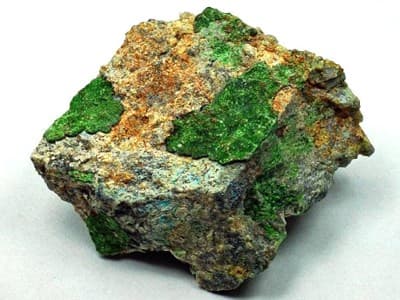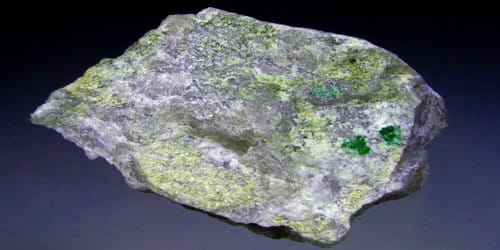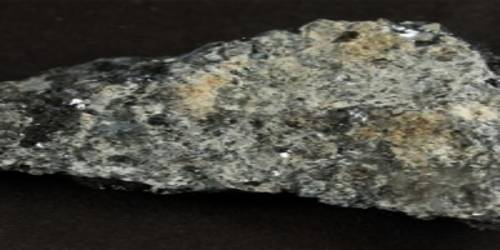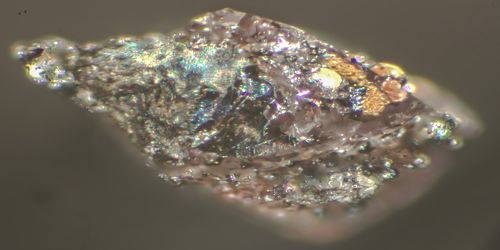Lindgrenite is an uncommon copper molybdate mineral with formula: Cu3(MoO4)2(OH)2. It occurs as tabular to platey monoclinic green to yellow-green crystals. It is a mineral consisting of a basic molybdate of copper.
It was named after Professor Waldemar Lindgren, a Swedish-American economic geologist at the Massachusetts Institute of Technology in the United States.
General Information
- Category: Molybdate mineral
- Formula: Cu3(MoO4)2(OH)2
- Crystal system: Monoclinic
- Crystal class: Prismatic (2/m) (same H-M symbol)

Properties
Lindgrenite is a monoclinic-prismatic mineral containing copper, hydrogen, molybdenum, and oxygen. It is a rare mineral formed in oxidized molybdenum-bearing copper deposits.
- Color: Green to yellowish green
- Crystal habit: Tabular to platey crystals, may be acicular, massive or crust forming
- Cleavage: Perfect on {010} and {101}, poor on {100}
- Fracture: Micaceous
- Tenacity: Brittle
- Mohs scale hardness: 4.5
- Luster: Greasey
- Streak: Pale green
- Diaphaneity: Transparent
- Specific gravity: 4.2
- Optical properties: Biaxial (-)
Discovery and occurrence
It was first described in 1935 for an occurrence in the Chuquicamata Mine, Antofagasta, Chile, and named for Swedish–American economic geologist Waldemar Lindgren (1860–1939) of the Massachusetts Institute of Technology. It occurs in localities in Chile, England, the United States, France, Japan, and Norway.
Locality type, Chuquicamata Mine, Chuquicamata District, Calama, El Loa Province, Antofagasta Region, Chile etc.
Lindgrenite occurs in the oxidized portions of copper-molybdenum bearing sulfide ore deposits. Associated minerals include antlerite, molybdenite, powellite, brochantite, chrysocolla, iron oxides, and quartz.
Association: Antlerite, molybdenite, powellite, brochantite, chrysocolla, iron oxides, quartz.
Information Source:
















